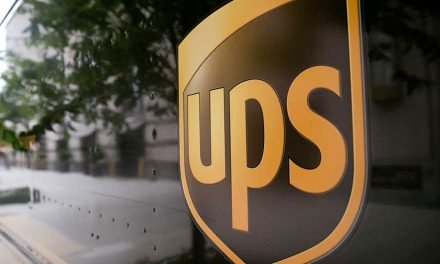
UPS to add surcharges to B2C parcels to cope with peak
UPS has announced plans to add extra surcharges to residential package prices to help it deal with the extra costs of handling huge volumes during the festive period. The move came following a profit warning issued last month after this year’s run-up to Christmas brought the Atlanta-based integrator an unexpected $200m in additional costs, as volumes soared beyond predictions.
It also came as the world’s largest package delivery company complained to regulators about federal-owned rival the US Postal Service, regarding the Postal Service’s recent investments in expanding its own competitive package shipping services.
USPS is in the process of seeking market share in the e-commerce field by freezing prices in its Priority Mail services and ruling out the use of dimensional-weight pricing, which UPS and FedEx have recently expanded to all ground shipments.
UPS suggested to the Postal Regulatory Commission that there were “serious, deeply embedded problems” in the way the Postal Service has been publicly reporting on the finances of package services that compete with private sector operators.
Results
UPS executives revealed the new residential surcharges planned for certain customer segments as the company announced its full-year results for the 2014 year.
The results showed that UPS grew its revenue 5% year-on-year in the 12 months up to the end of December 2014, to $58.2bn, but adjusted net income grew only 1.2% to $4.39bn.
Including certain large pension charges and other one-off costs, UPS saw its reported net income fall by 30.6% year-on-year to $3.03bn.
The company’s fourth quarter saw total revenue up 6.1% to $15.9bn, with adjusted net income down 1.9% year-on-year to $1.145bn.
David Abney, the UPS chief executive said the company was “disappointed” in its fourth quarter results, which were the result of overspending on measures designed to manage expected peak volumes that were not sustained over the whole peak period.
The 1.3bn packages UPS delivered during the fourth quarter represented an 8.1% volume growth compared to last year’s fourth quarter. But online retail sales patterns did not prove quite as expected, with a particular concentration of volume on “Cyber Monday” when deliveries were up 12% year-on-year.
Abney said despite some “obvious” cost overruns that could be dealt with for the next peak, he was pleased with the “strong” service levels UPS achieved in the fourth quarter.
“Peak season 2014 provided us an opportunity to deliver excellent service during periods where UPS volume more than doubled,” he said.
“To meet the challenge, we invested in capacity with new facilities, automation and expanded operations. It was important to fortify the trust of customers and protect our brand and from that perspective, UPS was successful.”
Surcharges
UPS said it would respond to the added costs it incurred during the peak period by further improving its operational efficiency, and adding residential surcharges during the peak season.
The company still sees the opportunity from e-commerce customers, forecasting that e-commerce will outpace global GDP growth by four times, and cross-border e-commerce by seven times.
But, executives said the company needed to be “properly compensated” for the job it performs at peak season.
Abney said: “We will be implementing peak residential surcharges that are differentiated from our non-peak time of year on a customer segmented basis.
“These surcharges will focus on SurePost and residential packages. In some cases, these changes will be implemented over a multi-year period as contracts come due. These pricing strategies will be designed to ensure we’re properly compensated for the value we provide.”
USPS complaint
UPS expanded its use of dimensional weight pricing — pricing for volume as well as weight, instead of just weight — to cover all UPS Ground services and UPS Standard to Canada from the end of December 2014, as another method to improve the profitability of carrying lightweight e-commerce packages. FedEx has done likewise with FedEx Ground shipments.
Federally-owned rivals USPS ruled out introducing dimensional-weight pricing for its package services, and has also announced plans to freeze prices for its competitive Priority Mail services when other prices rise this April. The moves aim to help the Postal Service grow its market share in the important e-commerce field, particularly as traditional mail volumes decline.
UPS submitted comments to the postal regulator this week complaining about the way the Postal Service publicly reports the costs of its competitive package services while it makes “large” investments in growing the services including major upgrades to tracking systems.
UPS suggested that since USPS has been refusing to publicly disclose data from its competitive services, it is difficult to determine whether it is sticking to laws that forbid the subsidising of competitive services using profits from monopoly services. USPS states that it withholds commercially-sensitive information from its regulatory filings so that competitors cannot use it to take advantage.
“This lack of transparency is unacceptable,” UPS told the Postal Regulatory Commission.
“The gravity of these problems warrants a comprehensive reevaluation of the
tests used to measure compliance with [US postal law] and the application of those tests to the Postal Service’s competitive products business… UPS intends to file a petition to initiate a proceeding for a thorough evaluation of the Postal
Service’s costing methodologies and the analytical principles employed by the Commission.”
With the Postal Service planning to invest $10bn over four years to boost its package services, UPS called on the regulators to require more detail on how the investments will be attributed to the competitive products to ensure compliance with the cross-subsidisation rules.
In its filing, UPS also made claims about the way the Postal Service was ignoring costs from the expansion of its competitive services by bundling them within general institutional costs.












